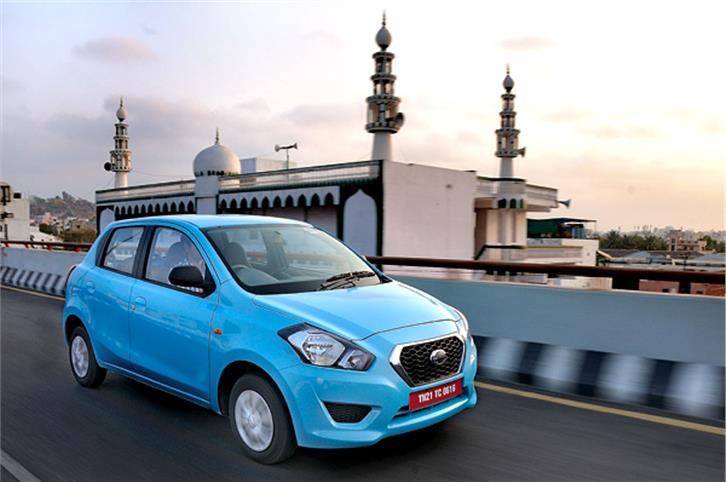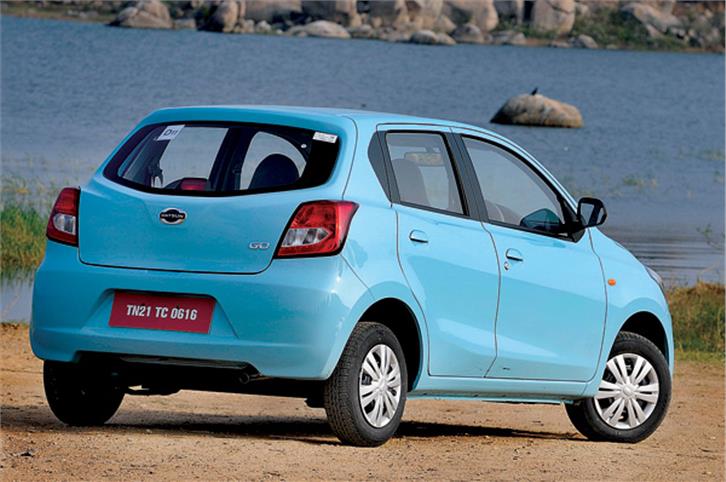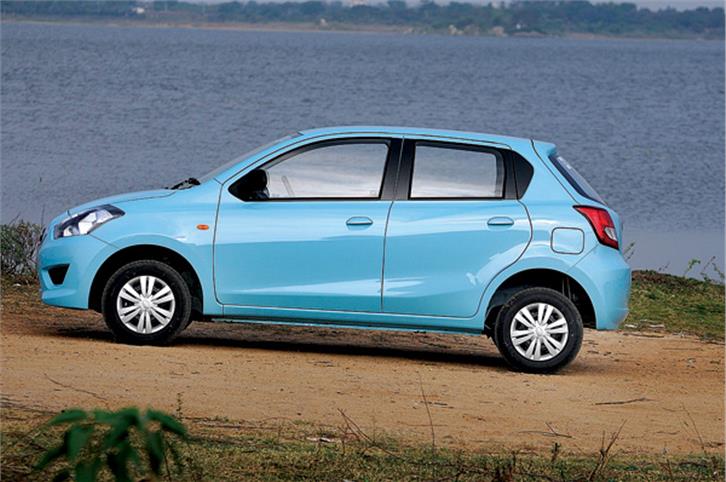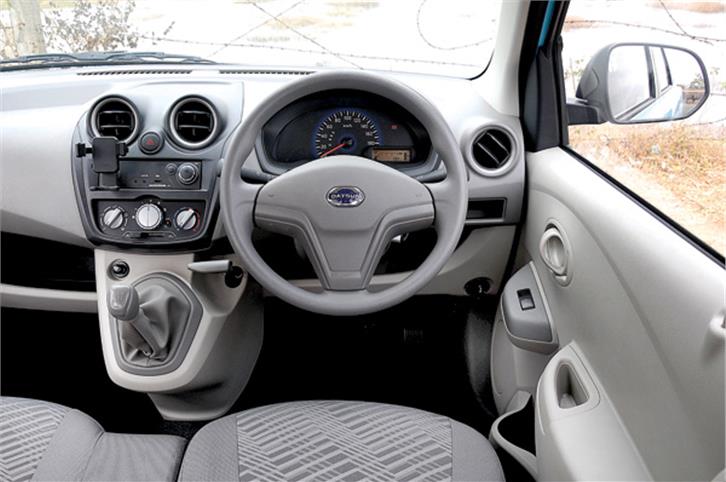Datsun Go review, road test
The Datsun Go hatchback has been launched at an aggressive Rs 3.12 lakh. Our road-test reveals what's on offer on this new budget hatchback.
Published on Mar 27, 2014 10:17:00 PM
2,41,092 Views
Follow us on
Datsun Go

The Go may be a car tailor-made for Indian requirements, but that also means it’s not quite built to global standards.



But a bigger issue is the one-size-fits-all driving position. You can’t adjust the seat height or the high-set steering, and for shorter drivers that could prove a problem in terms of visibility. And that’s a shame, because the two-generation-old Nissan Micra (code: K11) that served as the inspiration for the Go, was known for its large glass area and excellent visibility. The ergonomic issues don’t stop there either. Even the dash-mounted gear lever is positioned a tad too high, while the space-saving, pull-type handbrake that sits beside it is a bit tricky to operate on hill starts, especially for first-time drivers.
There’s only exterior adjustment for the rear-view mirrors, which is the norm for the class, but what’s annoying is that driver has a power window switch only for his window; you have to stretch across to the passenger side to operate that window. Also, there is no day-night rear view mirror on the inside. And while we are nitpicking, the digital screen for the tachometer, distance-to-empty and average fuel economy readouts is also too small to read comfortably on the go. But to give credit to the Go, the fairly comprehensive trip computer is a segment first, as is the ‘follow me home’ light function.

The Go’s dashboard is pretty functional, with lots of usable space. There’s a useful recess on the dash top and a large shelf under the steering column. The glovebox too is large, but shockingly, it comes without a lid, which effectively makes the cabin devoid of any concealed storage areas. However, as an accessory, Datsun will offer a storage box under the passenger seat for your papers.
The bench seat leaves no space for cupholders, but the door pockets make up for this with large bottle holders. Sadly, there’s absolutely no storage at the rear of the cabin. Rear-seat passengers will also have to contend with a limited view forward thanks to the unusual bench seat in front. Moreover, the bench blocks the flow of air from the AC vents, and though this wasn’t an issue during our test, we are not sure if it will affect cooling during summer.
The rear seat is quite flat, could’ve provided more thigh support and should have come with larger headrests. There is, however, good legroom and headroom on offer and the best bit is that it’s wide enough to seat three adults quite comfortably in the back.
Where the Go scores, and scores big, is with its massive 265-litre boot. It’s large enough to accommodate big suitcases flat, rather than vertically as in other hatchbacks. Sadly, you can’t conceal your luggage, as there’s no standard parcel tray. Also, since the hatch doesn’t have a key lock, you have to open the car and unlock the boot from the internal boot release next to the driver’s seat every time you want access.

It doesn’t take long to spot other areas where Nissan has saved costs. The boot lid lacks cladding, the seat fabric is pretty average, the rear seat belts don’t retract automatically and the front passenger gets no grab rail to hold. There’s also some parts-sharing with the Micra Active, and that’s a good thing. Bits like the door handles, air-con controls, vents and meaty stalks feel nice to operate. In fact, the Go is quite well screwed together and overall quality is actually good for this price.
Equipment levels are decent for the class, so long as you opt for the top T version featured here. The base D spec gets black bumpers and comes without air-conditioning and power steering. The middle-spec A version adds power windows and the audio system with its mobile phone stand.
Copyright (c) Autocar India. All rights reserved.


Comments
Member Login
Personal Details
No comments yet. Be the first to comment.